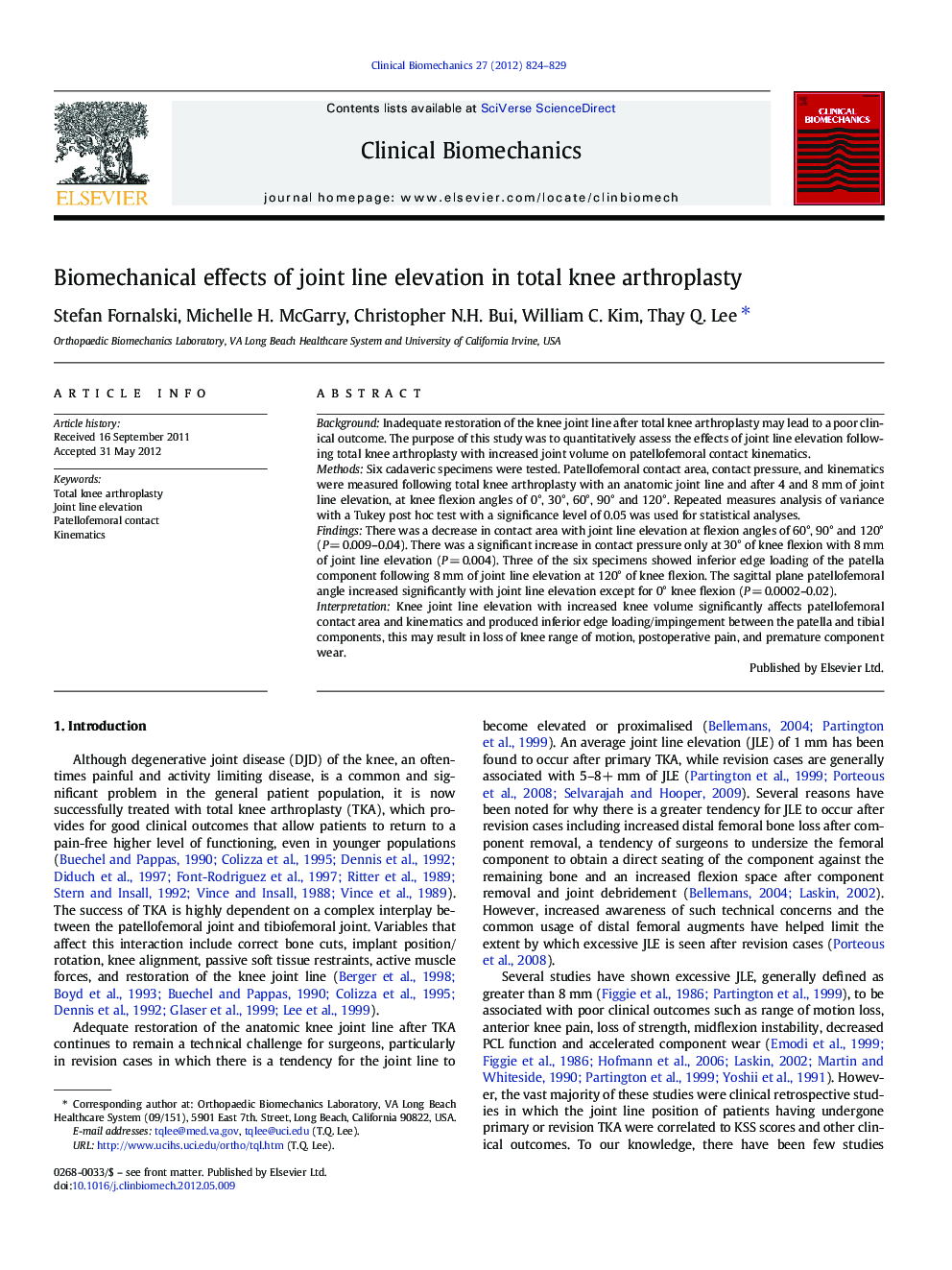| Article ID | Journal | Published Year | Pages | File Type |
|---|---|---|---|---|
| 6205169 | Clinical Biomechanics | 2012 | 6 Pages |
BackgroundInadequate restoration of the knee joint line after total knee arthroplasty may lead to a poor clinical outcome. The purpose of this study was to quantitatively assess the effects of joint line elevation following total knee arthroplasty with increased joint volume on patellofemoral contact kinematics.MethodsSix cadaveric specimens were tested. Patellofemoral contact area, contact pressure, and kinematics were measured following total knee arthroplasty with an anatomic joint line and after 4 and 8 mm of joint line elevation, at knee flexion angles of 0°, 30°, 60°, 90° and 120°. Repeated measures analysis of variance with a Tukey post hoc test with a significance level of 0.05 was used for statistical analyses.FindingsThere was a decrease in contact area with joint line elevation at flexion angles of 60°, 90° and 120° (P = 0.009-0.04). There was a significant increase in contact pressure only at 30° of knee flexion with 8 mm of joint line elevation (P = 0.004). Three of the six specimens showed inferior edge loading of the patella component following 8 mm of joint line elevation at 120° of knee flexion. The sagittal plane patellofemoral angle increased significantly with joint line elevation except for 0° knee flexion (P = 0.0002-0.02).InterpretationKnee joint line elevation with increased knee volume significantly affects patellofemoral contact area and kinematics and produced inferior edge loading/impingement between the patella and tibial components, this may result in loss of knee range of motion, postoperative pain, and premature component wear.
